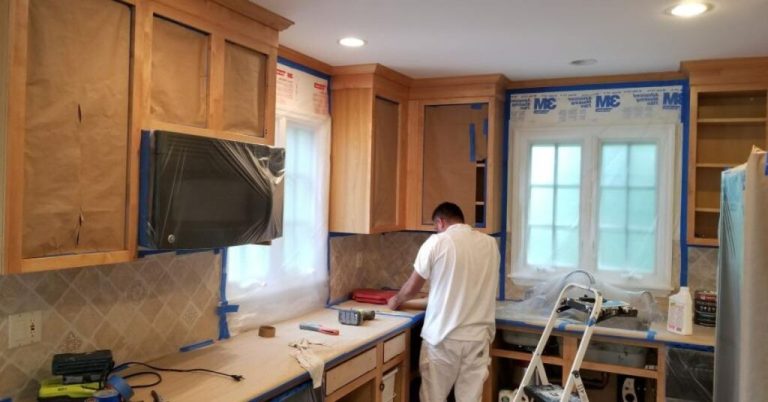Ready-to-Assemble (RTA) cabinets offer a cost-effective and versatile solution for homeowners, but like any product, they come with their own set of challenges. Understanding these common issues and knowing how to address them can help you make the most of your investment. Below, we outline the most frequent problems with RTA cabinets and practical solutions to resolve them.
1. Assembly Challenges
Problem:
RTA cabinets require self-assembly, which can be daunting for those without DIY experience. Missing instructions, unclear diagrams, or complex assembly steps can make the process overwhelming.
Solution:
- Organize Components: Lay out all parts and check them against the inventory list before starting assembly.
- Use Online Resources: Many manufacturers offer video tutorials or detailed instructions online.
- Label Parts: If parts aren’t pre-labeled, label them yourself to match the instructions.
- Invest in Tools: Ensure you have the right tools, such as a power drill, screwdriver, and clamps, for easier assembly.
2. Poor Alignment of Doors and Drawers
Problem:
Misaligned cabinet doors or drawers can make the cabinets look unprofessional and affect functionality.
Solution:
- Adjust Hinges: Use the adjustable screws on European-style hinges to align doors properly.
- Recheck Levels: Ensure that the cabinet base is level; use shims if needed.
- Drawer Slides: For drawers, make sure the slides are installed correctly and securely tightened.
3. Weak or Wobbly Structure
Problem:
Improper assembly or low-quality materials can lead to cabinets that feel unstable or wobbly.
Solution:
- Tighten Connections: Double-check all screws, cam locks, and dowels to ensure they’re securely fastened.
- Reinforce Joints: Use wood glue on joints during assembly for added stability.
- Anchor Cabinets: Secure wall cabinets to studs and use brackets for extra support.
4. Peeling or Chipping Finish
Problem:
Over time, the finish on RTA cabinets may begin to peel, chip, or show signs of wear, especially in high-traffic areas.
Solution:
- Apply Touch-Up Kits: Use manufacturer-provided touch-up pens or fillers to cover small chips and scratches.
- Protective Coating: Apply a clear polyurethane topcoat to reinforce the finish and prevent further damage.
- Avoid Harsh Cleaners: Use mild cleaning solutions to preserve the finish.
5. Sagging Shelves
Problem:
Shelves may sag under the weight of heavy items like pots, pans, or canned goods.
Solution:
- Add Shelf Supports: Install additional brackets or support clips to distribute weight more evenly.
- Upgrade Materials: Replace particleboard shelves with plywood for increased durability.
- Redistribute Weight: Avoid overloading shelves by evenly distributing the weight of stored items.
6. Moisture Damage
Problem:
RTA cabinets, especially those made from particleboard or MDF, are susceptible to swelling or warping when exposed to moisture.
Solution:
- Seal Edges: Use waterproof sealant on exposed edges to protect against water penetration.
- Address Leaks Promptly: Fix plumbing leaks or spills immediately to prevent water damage.
- Ventilation: Improve ventilation in areas like kitchens and bathrooms to reduce moisture buildup.
7. Limited Customization Options
Problem:
RTA cabinets often come in standard sizes and styles, which may not perfectly suit unique spaces or specific design preferences.
Solution:
- Modify Cabinets: Resize panels, add decorative trim, or repaint cabinets to match your vision.
- Combine Components: Mix and match cabinet styles or add custom-built features to enhance functionality.
- Consult Professionals: Hire a carpenter for modifications if you’re uncomfortable with DIY adjustments.
8. Loose Hinges or Hardware
Problem:
Over time, cabinet hinges or hardware may loosen, affecting the functionality and appearance of your cabinets.
Solution:
- Tighten Screws: Regularly inspect and tighten loose screws on hinges and handles.
- Use Thread Sealant: Apply thread-locking adhesive to screws that frequently loosen.
- Upgrade Hardware: Replace low-quality hardware with more durable options for long-term reliability.
9. Difficulty Aligning Cabinets During Installation
Problem:
Installing multiple cabinets in a straight, level line can be challenging, leading to gaps or uneven seams.
Solution:
- Use a Level: Check alignment frequently during installation with a spirit or laser level.
- Start with a Reference Point: Begin with the corner or base cabinet and align others to it.
- Secure Cabinets Together: Use clamps to hold cabinets in place while fastening them together.
10. Inconsistent Quality Across Brands
Problem:
RTA cabinets from different manufacturers can vary in material quality, affecting durability and appearance.
Solution:
- Research Reviews: Read customer reviews and ratings to select reputable brands.
- Inspect Materials: Choose cabinets made with solid wood or plywood over particleboard for better quality.
- Ask for Samples: Request samples to evaluate the material and finish before purchasing.
Conclusion
RTA cabinets offer an affordable and flexible option for home renovations, but understanding potential issues and their solutions can help you avoid common pitfalls. With proper assembly, proactive maintenance, and a bit of troubleshooting, you can enjoy durable and stylish cabinets that enhance your space for years to come.



